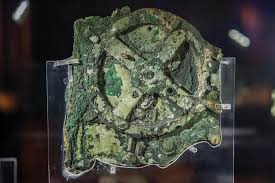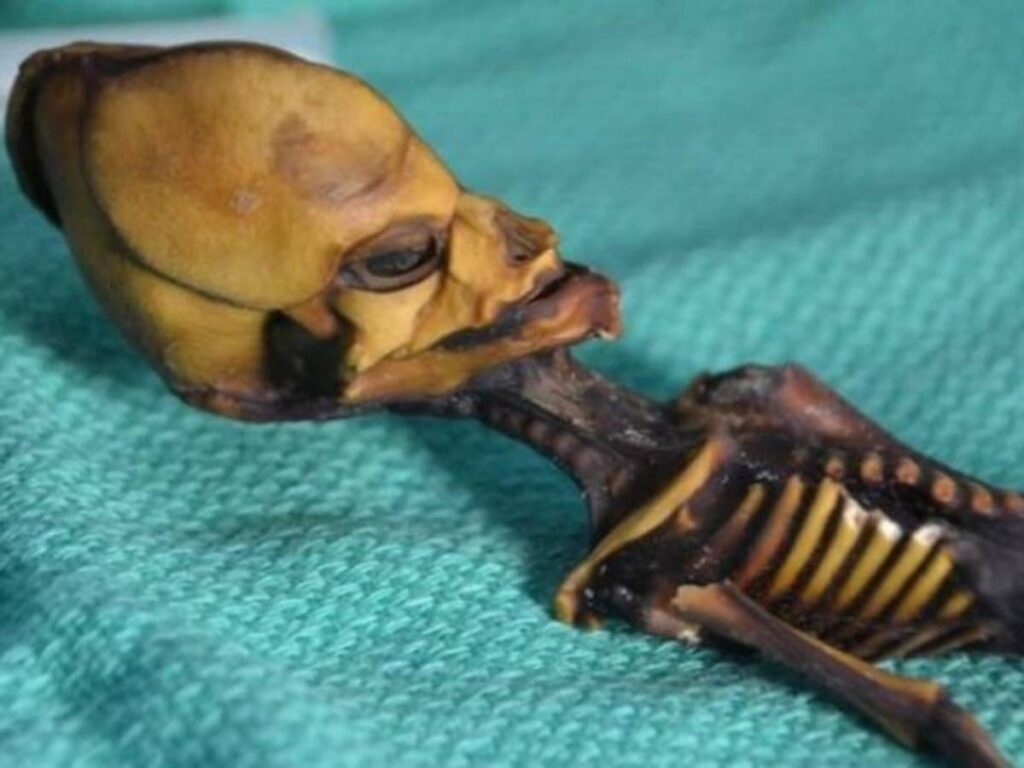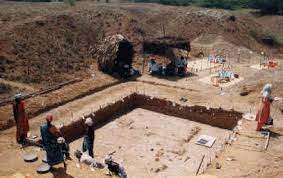Terracotta warriors

Workers constructing a well in China in 1974 came across a life-size statue of a soldier, but they had no idea what else was hidden beneath the ground. Since they began their excavations, archaeologists estimate that there may be as many as 8,000 clay statues. There are also life-size terracotta horses and chariots.
The majority are soldiers, each with a unique face expression and set of weapons. As a tomb for Qin Shi Huang Di, who ascended to the throne in 246 B.C., the project was built. Qin is interred in a tomb at the location that hasn’t been excavated yet due to uncertainties regarding its stability, but investigations along its edge have turned up statues of dancers and acrobats. Also read-Thomas Edison’s Secret Trick to Maximize His Creativity by Falling Asleep
Antikythera mechanism

Around 2,000 years ago, a Greek ship capsized off the coast of Antikythera and lay on the ocean floor until it was uncovered in 1900. The thing featured numerous layers of brass gears that were carefully fitted together and was built inside a wooden box. As archaeologists combed through the relics that had been recovered from the wreck, they came across this object and weren’t sure what to make of it.
A science historian discovered that it was possible to predict the positions of the planets and stars in the sky by date fifty years later. Since then, scholars have discovered Greek text on the item that demonstrates its additional abilities to forecast eclipses, lunar phases, and sporting events like the Olympics. Also read- The Great Sage of the Nineteenth Century, Sri Ramakrishna Paramahamsa
Medieval maternity

A woman in the Italian town of Imola passed away a few weeks before giving birth some 1,300 years ago. Her foetal skeleton was found between her legs, making her a rare case of “coffin birth,” in which a pregnant woman’s body gases build up and force the foetus through the delivery canal. However, another peculiar discovery that was made has experts more intrigued: the mother had a little hole made in her skull before she passed away.
Trepanation, the practise of creating such a hole, has been used historically and internationally to heal head injuries, headaches, and potentially even evil spirits. Researchers are unsure if she had preeclampsia or eclampsia in this case—pregnancy-related illnesses marked by extremely high blood pressure and perhaps seizures. Also read- Hanuman, Inventer of surya namaskar
Gobekli Tepe

Hunter-gatherers continued to be nomadic during the end of the Stone Age more than 11,000 years ago; they had not yet adapted to the agricultural lifestyle that served as the foundation for our modern cities and towns. However, this Turkish archaeological site has raised questions about the timeframe because it contains numerous rectangular rooms, massive pillars with animal decorations, and stone rings. Many academics believe it may be a religious complex, and it may be the oldest known piece of construction in the entire globe. Also read- Mystery behind the abandoned and haunted village of Kuldhara
Pet cemetery

South of Lima, Peruvian anthropologist Sonia Guillen and her crew were excavating a 1,000-year-old cemetery, but they discovered more than just humans there: The inhabitants of the Chiribaya civilisation, which existed before the Inca Empire, had interred 43 dogs there. The beloved llama herders’ dogs were buried in separate plots next to their human owners, and many of them were covered with blankets and food. Guillen and her team are attempting to establish a genetic link between the dogs and a popular contemporary breed known as the Chiribaya shepherd because the dogs’ bodies were preserved by the desert environment. Also read- 16 Scary Facts About The Real-Life Annabelle Doll
Tiny human or alien?

A six-inch-tall, pointed-headed skeleton was discovered organically mummified in the Chilean Atacama Desert in 2003. Scientists have now been able to sequence and study the skeleton’s DNA, dispelling many of the claims that it was an alien specimen despite the fact that it had bone density typical of a 6-year-old despite its diminutive size. The female mummy, Ata, is revealed to be human; she was primarily descended from native Chileans but also had some European ancestry. Researchers discovered seven distinct abnormalities in her growth-related genes, but they are unsure which one led to her skeletal deformity.
Hidden treasures
The 4,000-acre Range Creek property owned by Utah rancher Waldo Wilcox and his whole family was home to old pit homes, prehistoric rock drawings, and stone tools, all of which were hidden from view. The Wilcox’s gates and “road closed” signs, which were put up to dissuade hunters, helped ensure that the artefacts, which had been left there by a mysterious group known as the Fremont Indians who lived in the area 1,000 years ago, remained largely undisturbed. When Waldo felt he was too old to run the ranch, he gave the land to the Bureau of Land Management, and the Utah Museum of Natural History is now in charge of it. Also read- The Great Wall of China: 10 Interesting Facts
Advanced stone-age tools in India

According to genetic evidence, a tiny group of Homo sapiens that fled Africa approximately 60,000 years ago is where more than 90% of contemporary humans descended from. Researchers believe that group’s success may have been attributed to the development of improved stone tools, such as fine stone blades that could be utilised on spear tips rather than large hand axes.
However, a site in southern India, where prehistoric human habitation has not been well explored, reveals that people lived there more than 200,000 years ago and used sophisticated tools. Unknown but intriguing is whether this indicates that distinct hominids independently developed similar advancements or that human ancestors fled Africa in waves.
Kids with disabilities buried like royalty
34,000 years ago, hunter-gatherers buried six people, including two teenage boys, at a location called Sunghir, a few hours’ drive east of modern-day Moscow. The boys were buried together (heads adjacent) with 10,000 mammoth ivory beads, more than 20 armbands, about 300 pierced fox teeth, 16 ivory mammoth spears, carvings, antlers, and human fibulae laid across the chest of each child. The boys died between the ages of 10 and 12, and both showed signs of disability. On the other hand, some adult burials contained no riches at all, while others included few. Also read- Did you know the popular game “Snakes and Ladders” originated in India
78,000 years of human occupation

Human artefacts dating from the Middle Stone Age up to the present day can be found in Kenya’s Panga ya Saidi network of caverns. According to Michael Petraglia of the Max Planck Institute for the Science of Human History, who spoke to Haaretz, the cave’s main chamber, which is more than 1,000 square feet in size, could have comfortably housed hundreds of people, and its location in a tropical forest has benefitted from a relatively stable climate while other regions of Africa have experienced droughts. Large stone tools from the first inhabitants were discovered by his team; more advanced arrowheads and blades first appeared around 67,000 years ago. Also read- Great Pyramid of Giza, the secret chamber, what is inside?



